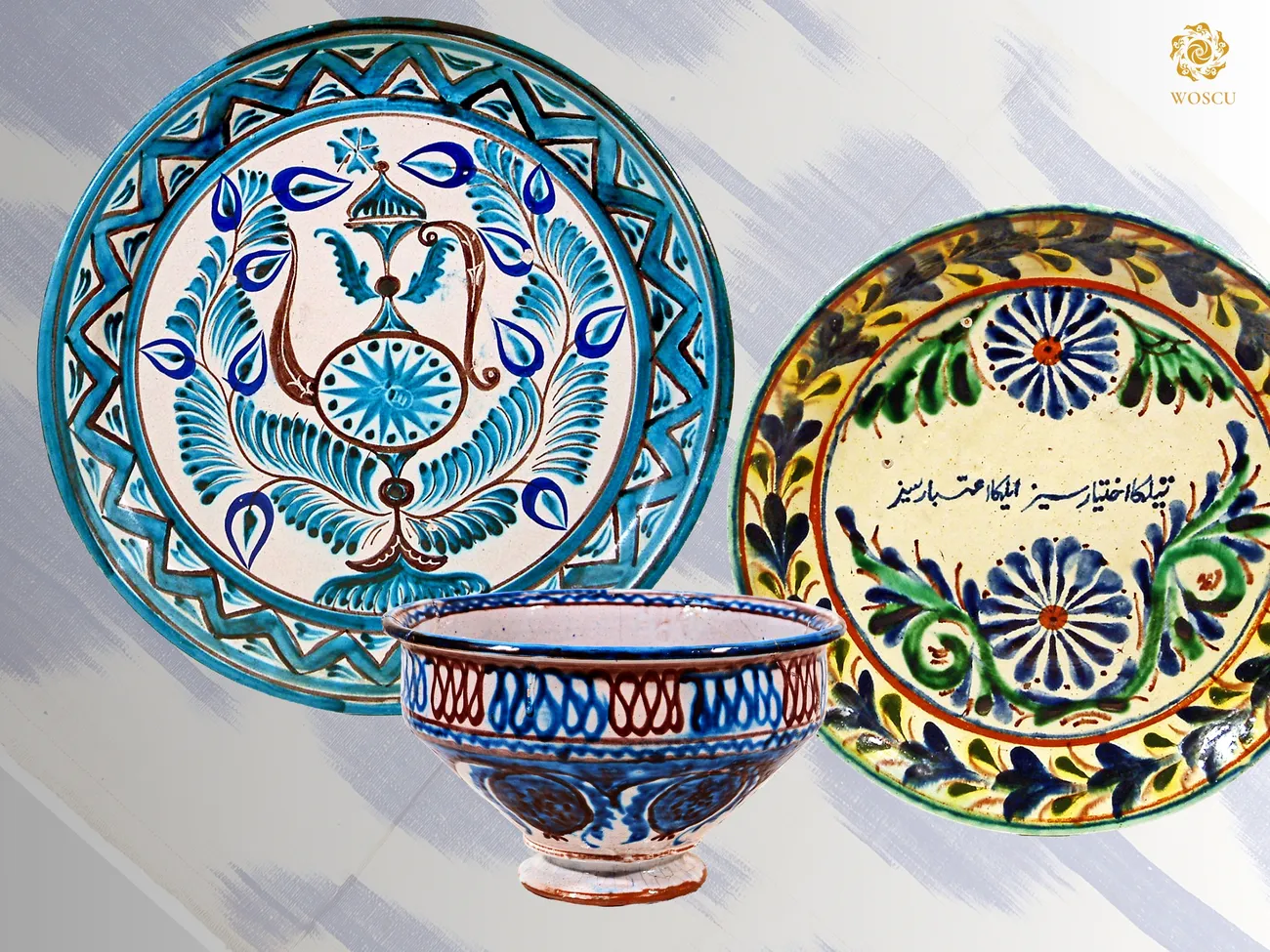
Rishtan artisans have been producing pieces on the basis of this traditional technique since the 70s; at present they produce two varieties of ceramic wares – shallow bowls, plates and similar objects, and tall pitchers.
In the past the production of various items was divided between specialists: the kosagar (kosa “bowl,” gar “master”) made flat and shallow objects and the kuzagar (kuza “pitcher”) made tall and extended objects. Nowadays this division of specializations is no longer strictly followed.
The Rishtan school produces a very diverse range of shapes. Its artisans make a variety of huge and small serving dishes, bowls of all shapes and sizes for milk and food, vases and pitchers for fruit and water, and jugs for oil and grain. Today the Rishtan masters have again begin using ishkor g laze, a plant-based glaze, in the design of their wares. The special artistic features of the local ceramics are determined in many ways by their decorations. Rishtan ceramics are characterized by particularly varied and colorful ornamentation. Plant ornaments are notably colorful and multifarious, representing stylized petals, the blossoms of almond, pomegranate and others fruit trees, as well as cypresses and branches. The relationship between traditional patterns and new variations comes into play particularly over the symbolism and interpretation of the plant motifs. In recent years some of the Rishtan masters have also decorated their serving dishes with Arabic calligraphy, or incorporated elements of traditional architecture like sections of minarets, mosques, and madrasas into the design.
Another famous ceramic center is Gurumsaray in the Ferghana Valley. Gurumsaray ceramics are characterized by a certain conservativism and stricter adherence to the old traditions. The whole production process, from the preparation of the glaze to the painting and firing in the kiln, is carried out by the master himself. The style in which the objects are painted is both quite archaic and yet epic and monumental, with a dynamism that characterizes these pieces. The monumental directness and stylistic unity of Gurumsaray ceramics are realized by means of robust decorative compositions, which have undergone hardly any change. The range of ornamentation is limited – pitchers, quatrefoils, and a large cross-shaped pattern with broad ends and shapes like many-pointed stars. Gurumsaray wares come in only a modest number of shapes – huge serving dishes (up to half a meter in diameter), medium-deep and flat plates for household use, and kushkulok (a plate with paired ears).
You can learn more about the topic in the book-album "Collections of the Federal Republic of Germany" (volume XI) in the series "Cultural Legacy of Uzbekistan in the World Collections".
The main sponsor of the project is the oilfield services company Eriell-Group.
